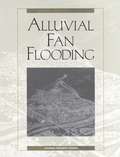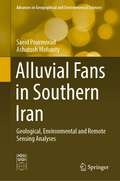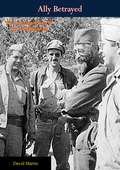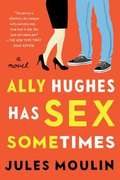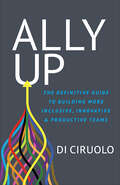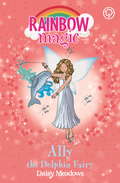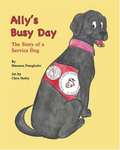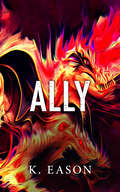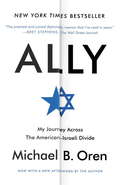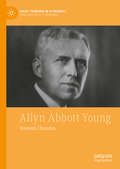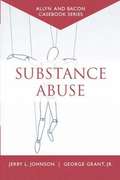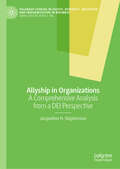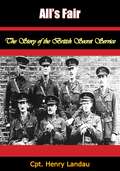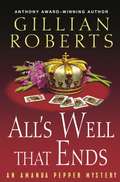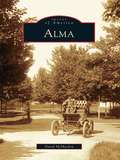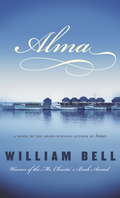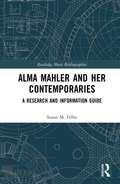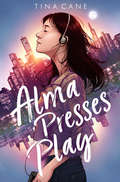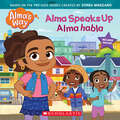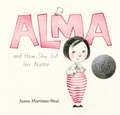- Table View
- List View
Alluvial Fan Flooding
by Committee on Alluvial Fan FloodingAlluvial fans are gently sloping, fan-shaped landforms common at the base of mountain ranges in arid and semiarid regions such as the American West. Floods on alluvial fans, although characterized by relatively shallow depths, strike with little if any warning, can travel at extremely high velocities, and can carry a tremendous amount of sediment and debris. Such flooding presents unique problems to federal and state planners in terms of quantifying flood hazards, predicting the magnitude at which those hazards can be expected at a particular location, and devising reliable mitigation strategies. Alluvial Fan Flooding attempts to improve our capability to determine whether areas are subject to alluvial fan flooding and provides a practical perspective on how to make such a determination. The book presents criteria for determining whether an area is subject to flooding and provides examples of applying the definition and criteria to real situations in Arizona, California, New Mexico, Utah, and elsewhere. The volume also contains recommendations for the Federal Emergency Management Agency, which is primarily responsible for floodplain mapping, and for state and local decisionmakers involved in flood hazard reduction
Alluvial Fans in Southern Iran: Geological, Environmental and Remote Sensing Analyses (Advances in Geographical and Environmental Sciences)
by Ashutosh Mohanty Saeid PourmoradThis book presents a complete set of studies of alluvial fan sediments in southern Iran from the point of view of sedimentology, sedimentary geochemistry, tectonics, economic geology, groundwater, geomorphology, hazards and telemetry. In addition, the book focuses on advanced topics and theory, which practically serves as a model for the study of this type of sediment around the world.Alluvial fans are an important and fundamental factor in many sciences such as geology, environmental science, natural hazards, groundwater science, agriculture and many other related sciences. Lack of accurate knowledge of their constituent sediments has always been an important problem for experts in many science disciplines. From the economic point of view, the identification of alluvial fan deposits is of particular importance. For example, alluvial deposits are the centre of groundwater accumulation, and most groundwater reservoirs within the sedimentary basin are fed by water from alluvial deposits. Most of the gold production in South Africa has been formed as placer deposits in ancient alluvial fans. In addition, a large amount of uranium placer deposits is extracted from old alluvial fans in sedimentary basins in South Africa. This book serves as an ideal guide for experts in earth and environmental sciences and hydrology.
Ally (Nemesis #2)
by Anna BanksWill her nemesis become her ally? The thrilling sequel to Nemesis from Anna Banks, the New York Times-bestselling author of the Syrena LegacyPrincess Sepora of Serubel and King Tarik of Theoria have formed an uneasy truce between their kingdoms since the deadly plague began to rip through Theoria. Since their feelings for each other are entangled in politics and power, they must use their own trusted resources to find common ground.But when traitors with powerful allies arise from unexpected places, Tarik and Sepora face challenges that will change both of their kingdoms forever. Will they learn whom to trust—including each other—in time to save their kingdoms, their relationship and even their lives?
Ally Betrayed: The Uncensored Story of Tito and Mihailovich
by David Martin Dame Rebecca WestDavid Martin, a distinguished journalist, political analyst and staff member on the Senate Judiciary Committee, first published his book ALLY BETRAYED in 1946. Having devoted his life to uncovering the truth and to defending Mihailovich, Martin’s book asks the crucial questions:1. Why did the Allied press which had made a great hero of Mihailovich as a resister of Axis invaders of Yugoslavia begin to play him down after 1942?2. What was Tito’s past? And where was the radio station located that heralded his appearance in Yugoslavia?3. What decision was reached at Teheran with respect to Tito and Mihailovich?4. How was the ALLIED military intelligence about Yugoslavia falsified?5. Why did Churchill say of Yugoslavia, “I was deceived and badly informed.”David Martin was born in Ontario, Canada, in 1914. Before World War II, he wrote on Canadian affairs for Current History, The Nation, The New Republic, the New Leader, and other journals. He joined the Canadian Air Force in October 1942, became a pilot, and flew on the Burmese frontier. He was honorably discharged in 1946.With a Foreword by Dame Rebecca West, one of Mihailovich’s most avid supporters.“Solid reading”—Kirkus Review
Ally Hughes Has Sex Sometimes
by Jules MoulinWhen a buttoned-up professor and her unbuttoned daughter fall for the same irresistible man, a delightful, subversive comedy begins. . . . Life isn't easy for single mother Ally Hughes. Teaching at Brown, her class load is huge and her boss is a menace. At home, she contends with a critical mother, a falling-down house, and a daughter who never misses a beat. Between taking care of the people she loves, teaching full time, and making ends meet, Ally doesn't have time for a man. She doesn't date. She's not into flings. But then she meets Jake, an eager student, young in years but old in soul, who challenges his favorite professor to open up her life, and her heart, to love. It doesn't work. In fact, his urging backfires.Ten years later, Ally's still single. Jake reappears and surprises her in a brand-new role: He's dating Ally's now-grown daughter. In this hilarious, heartrending tale, Ally is finally forced to concede (not only to herself) that an independent, "liberated" woman can still make room in her life for love.
Ally Hughes Has Sex Sometimes: A Novel
by Jules MoulinWhen a buttoned-up professor and her unbuttoned daughter fall for the same irresistible man, a delightful, subversive comedy begins. . . . Life isn't easy for single mother Ally Hughes. Teaching at Brown, her class load is huge and her boss is a menace. At home, she contends with a critical mother, a falling-down house, and a daughter who never misses a beat. Between taking care of the people she loves, teaching full time, and making ends meet, Ally doesn't have time for a man. She doesn't date. She's not into flings. But then she meets Jake, an eager student, young in years but old in soul, who challenges his favorite professor to open up her life, and her heart, to love. It doesn't work. In fact, his urging backfires.Ten years later, Ally's still single. Jake reappears and surprises her in a brand-new role: He's dating Ally's now-grown daughter. In this hilarious, heartrending tale, Ally is finally forced to concede (not only to herself) that an independent, "liberated" woman can still make room in her life for love.
Ally Up: The Definitive Guide to Building More Inclusive, Innovative, & Productive Teams
by Di CiruoloAlly Up teaches what every business should know about diversity, equity, and inclusion.
Ally the Dolphin Fairy: The Ocean Fairies Book 1 (Rainbow Magic #1)
by Daisy MeadowsGet ready for an exciting fairy adventure with the no. 1 bestselling series for girls aged 5 and up. Rachel and Kirsty are visiting Kirsty's grandmother when they are whisked away to Fairyland for the yearly Ocean Gala. Here, Shannon the Ocean Fairy plays her Magical Golden Conch Shell to ensure that the seas and oceans remain peaceful and ordered for the year ahead. Everything is going well - until Jack Frost snatches the conch shell and breaks it into seven pieces. Rachel and Kirsty, along with the Ocean Fairies, must get the pieces back before chaos takes over the oceans!'These stories are magic; they turn children into readers!' ReadingZone.comRead all seven fairy adventures in the Ocean Fairies set! Ally the Dolphin Fairy; Amelie the Seal Fairy; Pia the Penguin Fairy; Tess the Sea Turtle Fairy; Stephanie the Starfish Fairy; Whitney the Whale Fairy and Courtney the Clownfish Fairy.If you like Rainbow Magic, check out Daisy Meadows' other series: Magic Animal Friends and Unicorn Magic!
Ally's Busy Day: The Story of a Service Dog
by Maureen PranghoferAlly's Busy Day is the story about a typical day of a service dog named Ally. She helps her owner, who is blind and a quadriplegic, throughout her day. From odd jobs around the house and into the community, Ally serves with pride. When Ally works she wears a special vest so people know she is on the job.
Ally: A Dark Fantasy Novel (On the Bones of Gods #3)
by K. EasonThe Illhari Republic teeters on the edge of war…Rival godsworn battle in Illharek’s streets. In the fields and forests, a dragon-led army plots its attack. With powerful allies in the Senate and the Academy trying to maintain order, Snow and Veiko make plans to confront the god’s avatar. But as the army--and the dragon--bear down on Illharek, a godsworn assassin shatters the city’s fragile peace. As their alliances start to crack, Snow and Veiko find themselves fighting a war on two fronts.Because this isn’t a battle for Illharek’s streets, it’s a battle for Illharek’s soul.Praise for K. Eason's Books"This story delights from cover to cover. The political intrigue never fails to surprise, each character is layered and compelling, and there’s a perfect balance between science-fiction action and fairy-tale fantasy. Do not, under any circumstances, miss out on this." —Kirkus (starred review) on How Rory Thorne Destroyed the Multiverse"Eason adds a feminist modern twist to fairy tale and sf tropes while presenting an intergalactic adventure that enthralls in its own right, striking that ideal balance between original and familiar.... A delightful start to what promises to be a smart, unique series." —Booklist (starred review) on How Rory Thorne Destroyed the Multiverse"Exquisitely written with complex characters, sardonic wit, and immersive worldbuilding. Highly recommended." —Library Journal (starred review) on How Rory Thorne Destroyed the Multiverse“Readers seeking a genre-blending tale will enjoy Eason’s no-nonsense tone as she sets the plot of a thriller within her established world of science fiction and fantasy.” —Booklist on Nightwatch on the Hinterlands“Eason has a real talent for building engrossing and intricate worlds that feel both whimsical and real at the same time.” —The Quill to Live on Nightwatch on the Hinterlands“Splendid stuff!” —Jason M. Hough, New York Times bestselling author on Nightwatch on the Hinterlands“[This] is a perfect blending of sci-fi and fantasy with a pair of the most unlikely and enjoyable detectives you’ll ever meet.” —Stephen Blackmoore, author of the Eric Carter series on Nightwatch on the Hinterlands
Ally: My Journey Across the American-Israeli Divide
by Michael B. OrenNEW YORK TIMES BESTSELLERMichael B. Oren's memoir of his time as Israel's ambassador to the United States--a period of transformative change for America and a time of violent upheaval throughout the Middle East--provides a frank, fascinating look inside the special relationship between America and its closest ally in the region. Michael Oren served as the Israeli ambassador to the United States from 2009 to 2013. An American by birth and a historian by training, Oren arrived at his diplomatic post just as Benjamin Netanyahu, Barack Obama, and Hillary Clinton assumed office. During Oren's tenure in office, Israel and America grappled with the Palestinian peace process, the Arab Spring, and existential threats to Israel posed by international terrorism and the Iranian nuclear program. Forged in the Truman administration, America's alliance with Israel was subjected to enormous strains, and its future was questioned by commentators in both countries. On more than one occasion, the friendship's very fabric seemed close to unraveling. Ally is the story of that enduring alliance--and of its divides--written from the perspective of a man who treasures his American identity while proudly serving the Jewish State he has come to call home. No one could have been better suited to strengthen bridges between the United States and Israel than Michael Oren--a man equally at home jumping out of a plane as an Israeli paratrooper and discussing Middle East history on TV's Sunday morning political shows. In the pages of this fast-paced book, Oren interweaves the story of his personal journey with behind-the-scenes accounts of fateful meetings between President Obama and Prime Minister Netanyahu, high-stakes summits with the Palestinian leader Mahmoud Abbas, and diplomatic crises that intensified the controversy surrounding the world's most contested strip of land. A quintessentially American story of a young man who refused to relinquish a dream--irrespective of the obstacles--and an inherently Israeli story about assuming onerous responsibilities, Ally is at once a record, a chronicle, and a confession. And it is a story about love--about someone fortunate enough to love two countries and to represent one to the other. But, above all, this memoir is a testament to an alliance that was and will remain vital for Americans, Israelis, and the world.Praise for Ally "The smartest and juiciest diplomatic memoir that I've read in years, and I've read my share. . . . The best contribution yet to a growing literature--from Vali Nasr's Dispensable Nation to Leon Panetta's Worthy Fights--describing how foreign policy is made in the Age of Obama."--Bret Stephens, The Wall Street Journal "Illuminating . . . [Oren's] personal odyssey exemplifies the shift from a liberal and secular Zionism to a more belligerent nationalism."--The New York Times"Provocative . . . Oren's book offers a view into the deep rifts that have opened not only between Washington and Jerusalem, but also between Israeli and American Jews."--Newsweek "[Oren is] one of the most uniquely qualified judges of this ever more crucial special relationship."--The Washington Times "The diplomatic equivalent of a 'kiss-and-tell' memoir . . . informative and in parts entertaining."--Financial Times "The talk of Washington and Jerusalem . . . an ultimate insider's story."--New York PostFrom the Hardcover edition.
Allyn Abbott Young (Great Thinkers in Economics)
by Ramesh ChandraAllyn Young (1876-1929) was a deep thinker and achieved fame during his lifetime. His fame owes more to his style and influence as a teacher than his published work. His greatest fame as an author rests on a single economic paper on increasing returns and economic progress but he contributed much more as a mentor to his graduate students such as Frank Knight, Edward Chamberlin, and Lauchlin Currie at Harvard and to the undergraduate Nicholas Kaldor at the London School of Economics. He shot into international fame for his role as a member of the American delegation led by President Woodrow Wilson to negotiate peace at Paris after WWI. However, recent interest in Young is more due to his thought than to his contribution to the economics profession or public service. At the time of his death, he was working on two treatises, one on Money and the other on Economics. The one on Money was at a fairly advanced stage but no trace of either was found in his family’s hasty departure from London after his untimely death. There is a general dearth of published material about Young, his thought and his life. His economic thought, apart from his views on growth theory and monetary economics, is relatively unknown. This volume offers a thematic approach to his contributions and biography.
Allyn and Bacon Casebook Series: Substance Abuse
by Jerry L. Johnson George GrantEach title in the Allyn & Bacon Johnson & Grant Casebook Series presents three to four in-depth cases in a different topic area, prefaced by an introduction to generalist social work practice. Allyn & Bacon Casebook Series for Substance Abuse, First Edition by Jerry Johnson and George Grant provides students with personal and intimate glimpses into the thinking and actions of experienced practitioners working with with substance abusing clients. The contributors to this casebook combined many decades of social work experience and teaching to create a one-of-a-kind tool for students to study and analyze how practitioners think about practice.
Allyship as Action: 7 Ways to Advocate for Others (Orca Take Action)
by Tanya BotejuBeing an ally is about learning and action. It's a constant, ongoing willingness to engage in the hard, confronting work of standing alongside those who don't have the same privileges. As a young person, it can be difficult to take a stand for others when the need to fit in is so strong. But everyone can be an ally. Learn to acknowledge the privileges you have based on your identity, the difference between allyship and being a performative ally and how to address mistakes when we make them. In this book, young readers will work through realistic scenarios that show allyship in action and develop tools to become the best allies they can be. The epub edition of this title is fully accessible.
Allyship in Organizations: A Comprehensive Analysis from a DEI Perspective (Palgrave Studies in Equity, Diversity, Inclusion, and Indigenization in Business)
by Jacqueline H. StephensonThis book provides a comprehensive analysis of the issues surrounding allyship as one of the tools in the arsenal of organisational leaders to further advance the goal of diversity, equity and inclusion (DEI) in organisations. It extends the existing literature on allyship, which has predominantly focused on allyship in the context of gender and racial inclusion. It specifically addresses allyship concerns within organizations that are striving for DEI. The chapters explore various models of allyship, delving into the antecedents, moderators, mediators, and organizational outcomes associated with effective allyship in the pursuit of DEI goals. This text critically examines the concept of allyship in the context of discrimination faced by various groups, including but not limited to under-researched populations such as persons with disabilities and individuals from the lesbian, gay, bisexual, and queer (LGBQ) community. By extending the understanding of human resource practitioners and academic theorists in these underexplored but crucial areas, it sheds light on the role of organisational allies in addressing discrimination and supporting marginalized groups. Additionally, it delves into the involvement of organisational allies in adjudicated discrimination cases, further enriching the discourse on allyship and its practical applications. Providing a comprehensive review of the salient issues surrounding allyship within organisations and the extent to which this can be an efficacious approach in promoting and developing more inclusive and diverse contemporary organisations, this work will prove useful to researchers in facilitating the delivery of contemporary data, literature and analysis as it relates to the current challenges faced by disadvantaged employees and job seekers and how lenses through which they are perceived, may be prejudicial.
All’s Fair in Love and Cupcakes
by Betsy St. AmantKat inspected rows of the same old cupcakes. They seemed to blink back at her, as if they knew she was capable of so much more. Kat Varland has had enough of chocolate, vanilla, and strawberry. At twenty-six years old, Kat is still living in the shadows of her family in Bayou Bend, Louisiana. Still working shifts at her Aunt Maggie’s bakery. Still wondering what to do with her passion for baking and her business degree. And still single. But when Lucas Brannen, Kat’s best friend, signs her up for a reality TV bake-off on Cupcake Combat, everything Kat ever wanted is suddenly dangled in front of her: creative license as a baker, recognition as a visionary . . . and a job at a famous bakery in New York. As the competition heats up, Lucas realizes he might have made a huge mistake. As much as he wants the best for Kat, the only thing he wants for himself—her—is suddenly in danger of slipping away. The bright lights of reality cooking wars and the chance at a successful career dazzle Kat’s senses and Lucas is faced with a difficult choice: help his friend achieve her dreams . . . or sabotage her chances to keep her in Louisiana.
All’s Fair: The Story of the British Secret Service
by Cpt. Henry LandauIt was in 1934 that Henry Landau, Captain in the British Army’s RFA, first published his memoirs as a World War I spy master.All’s Fair: The Story of the British Secret Service tells an authentic, exciting, true story of spies and their dangerous work, revealed for the first time by a British Secret Service Agent…“It does not contain a dull page.”—New York Herald Tribune
All’s Well That Ends
by Gillian RobertsBarring the usual teenage pranks, all seems peaceful at Philly Prep, the private school in Philadelphia where Amanda Pepper teaches English. No doubt the money that appears to be missing from funds collected to aid victims of a catastrophic hurricane Down South will turn up. Probably the rumor that some of Amanda’s students have discovered the thrills of gambling is totally unfounded. In any case, Amanda has other things to think about. Her husband, private investigator C. K. MacKenzie, is struggling to help his Louisiana kinfolk reconstruct their post-hurricane lives. Her friend Sasha’s stepmother has just committed suicide–although, according to Sasha, Phoebe Ennis would never have killed herself, especially not while having a drink and wearing a red silk blouse and red sandals with four-inch heels. Amanda isn’t persuaded but reluctantly agrees to help investigate the woman’s demise, though the evidence for foul play is slim. True, the middle-aged compulsive collector of knickknacks wasn’t universally loved. Phoebe’s own son hated her and she bored her friends to death with hints of her “royal” lineage. And with four marriages behind her, she was already preparing to announce her renewed availability on the Net. But when another woman is found dead in Phoebe’s house, it becomes clear that something is indeed murderously amiss, and much closer to home than Amanda or anyone else could have imagined. All’s Well That Ends is the final novel in Gillian Roberts’s acclaimed Amanda Pepper series. It’s also the best, irresistibly intelligent, and richly entertaining. Amanda’s farewell adventure brings the genius of “the Dorothy Parker of mystery writers” (Nancy Pickard) into full flower, and the bloom is sweet and a wonder to behold. From the Hardcover edition.
Alma
by David McmackenRalph Ely, founder of Alma, selected 10 acres of old forest on the bank of the Pine River in 1853. In this central-Michigan wilderness, he built a log cabin, a log store, and two steam-powered mills--a sawmill and a gristmill. At first, his growing settlement was called Elyton, but within a few years, it was renamed Alma, memorializing a battle in the Crimean War. Alma was energized by the acquisition of millionaire lumberman and entrepreneur Ammi W. Wright, who poured his resources into the town. Wright encouraged the establishment of Alma College in 1886 and the state Masonic home for the elderly in 1911. Wright laid the foundations for Alma's great Republic Truck Company, the largest exclusive maker of trucks in the world by 1920. The discovery of several oil fields prompted the establishment of two oil refineries in Alma in the 1930s and saved the town from the doldrums of the Great Depression. By the 1950s, Alma was a key national manufacturer of house trailers and mobile homes. This photographic panorama reflects the city's economic cycles and its institutions that have given Alma an enviable stability through the years.
Alma
by William BellAward-winning YA author William Bell's Alma is the captivating story of a quiet girl who builds a friendship with a reclusive stranger.Times have been tough since Alma's father died and she and her mother had to give up their farm and move into town. Luckily, Alma can always retreat into the books of her favourite author, R.R. Hawkins.When Alma's teacher notices her lovely handwriting, she recommends Alma for a job transcribing letters for "Miss Lily," a reclusive old woman who has just arrived from Boston. Eventually, their mutual love of reading creates a strong friendship. Miss Lily lends Alma some of her favourite books, introduces her to calligraphy, and encourages her passion to write stories.But who is this difficult and solitary old woman who reminds Alma of Dickens' Miss Havisham? And why is she so secretive about the part of her life she refuses to share? Could she be, as Alma begins to suspect, R.R. Hawkins herself? Alma is determined to find out.This touching story explores the relationship between a blossoming writer and her mentor, and delves into the complicated dynamics of friendship and trust.From the Trade Paperback edition.
Alma Mahler and Her Contemporaries: A Research and Information Guide (Routledge Music Bibliographies)
by Susan M. FillerThis selective annotated bibliography places Alma Mahler with three other female composers of her time, covering the first generation of active female composers in the twentieth century. It uncovers the wealth of resources available on the lives and music of Mahler, Florence Price, Yuliya Lazarevna Veysberg, and Maria Teresa Prieto and supports emerging scholarship and inquiry on four women who experienced both entrenched sexual discrimination and political upheaval, which affected their lives and influenced composers of subsequent generations.
Alma Mater: A Novel
by Rita Mae BrownSex makes monkeys out of all of us. If you don’t give in to it, you wind up a cold, unfeeling bastard. If you do, you spend the rest of your life picking up the pieces. . . . At the start of senior year at William & Mary, the six-foot-tall, raven-haired beauty Victoria “Vic” Savedge finds her future mapped out in detail. She will marry Charly Harrison, the son of one of Virginia’s most prominent families. Though branded by a fiery streak of independence, Vic hasn’t really considered any other options. Until she meets a woman named Chris. A transfer from Vermont, Chris is new to Southern mores and attitudes. Though instantly captivated by Vic, she is also drawn to the entire quirky but charming Savedge family. But the young women’s friendship is not your basic college-girl variety. For neither can resist their mutual attraction–an attraction that erupts into a passion that will forever change the course of both their lives.
Alma Presses Play
by Tina CaneA lyrical novel-in-verse that takes us through the journey of coming of age in New York during the 80s.Alma's life is a series of halfways: She's half-Chinese, half-Jewish; her parents spend half the time fighting, and the other half silent; and she's halfway through becoming a woman. But as long as she can listen to her Walkman, hang out with her friends on the stoops of the Village, and ride her bike around the streets of New York, it feels like everything will be all right. Then comes the year when everything changes, and her life is overtaken by constant endings: friends move away, romances bloom and wither, her parents divorce and--just like that--her life as she knew it is over. In this world of confusing beginnings, middles, and endings, is Alma ready to press play on the soundtrack of her life?
Alma Speaks Up / Alma habla (Alma's Way)
by G. M. KingA heartwarming storybook based on the hit PBS Kids series Alma's Way, created by Emmy Award-winning actor Sonia Manzano - best known as Maria on Sesame Street.Alma and her friends André and Rafia can't wait to help their neighbor, Mr. Huda, make his storefront beautiful. They are going to paint a mural on the wall outside the store! But when André wants to do the mural his own way, it's up to Alma to talk to him about it. Can she find a way to express herself without hurting Andre's feelings?PBS's "Alma's Way" explores the life of six-year-old Alma, a Puerto Rican girl from the Bronx, as she navigates new challenges and solves them through creativity and fun. Kids won't want to miss this bilingual storybook that introduces Alma and her friends and family!Includes a pullout poster of Alma, her family, and all her friends from the neighborhood!
Alma and How She Got Her Name
by Juana Martinez-NealIf you ask her, Alma Sofia Esperanza José Pura Candela has way too many names: six! How did such a small person wind up with such a large name? Alma turns to Daddy for an answer and learns of Sofia, the grandmother who loved books and flowers; Esperanza, the great-grandmother who longed to travel; José, the grandfather who was an artist; and other namesakes, too. As she hears the story of her name, Alma starts to think it might be a perfect fit after all — and realizes that she will one day have her own story to tell. In her author-illustrator debut, Juana Martinez-Neal opens a treasure box of discovery for children who may be curious about their own origin stories or names.
